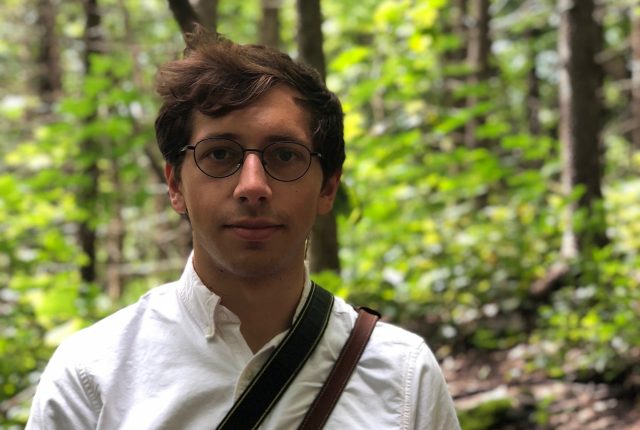
On May 9, John Sullivan, a PhD candidate in history at Northwestern University, delivered an online lecture as a 2023–2024 recipient of the Kenneth Karmiole Endowed Graduate Research Fellowship. The lecture considered how cities figured in and spurred the production of various genres of historical writing that naturalists and governmental officials used to comprehend catastrophic seismic events in the eighteenth-century Bourbon lands of Italy and Central America.
In his lecture, Sullivan explored the notebooks of the French geologist Louis-Benjamin Fleuriau de Bellevue, who trekked the length of Italy and climbed its alpine peaks between 1788 and 1793. Towards the end of his journeys, Bellevue passed through Sicily and Calabria, in the peninsula’s far south, where he investigated the socioenvironmental impacts of violent earthquakes that had devastated the region in 1783. Sullivan contextualized Bellevue’s observations by comparing them with other contemporary accounts of the 1783 Calabria earthquakes and the Santa Marta earthquakes that had rocked Guatemala a decade prior. Bringing together natural histories, like Bellevue’s, as well as chronology, conjectural history, exemplary history, and bureaucratic testimonies, Sullivan revealed what historically pregnant moments earthquakes were and the central role of cities as a throughline uniting these historical narratives. Early moderns, he demonstrated, explicitly conceptualized disaster as a moment of urban ruination.
Sullivan received a BA in history from Boston College and an MSt in history from the University of Oxford. The research he conducted at the Clark Library helped further his dissertation, “Fractious Knowledge: Earthquakes and Engineering in Eighteenth-Century Naples and the Spanish Atlantic.” The project challenges overly simplistic views of early modern empire by examining how earthquakes shaped similar types of bureaucratized scientific investigation and urbanized colonization in Central America and Calabria, which were both seismically active “peripheries” of interlinked Bourbon monarchies.

